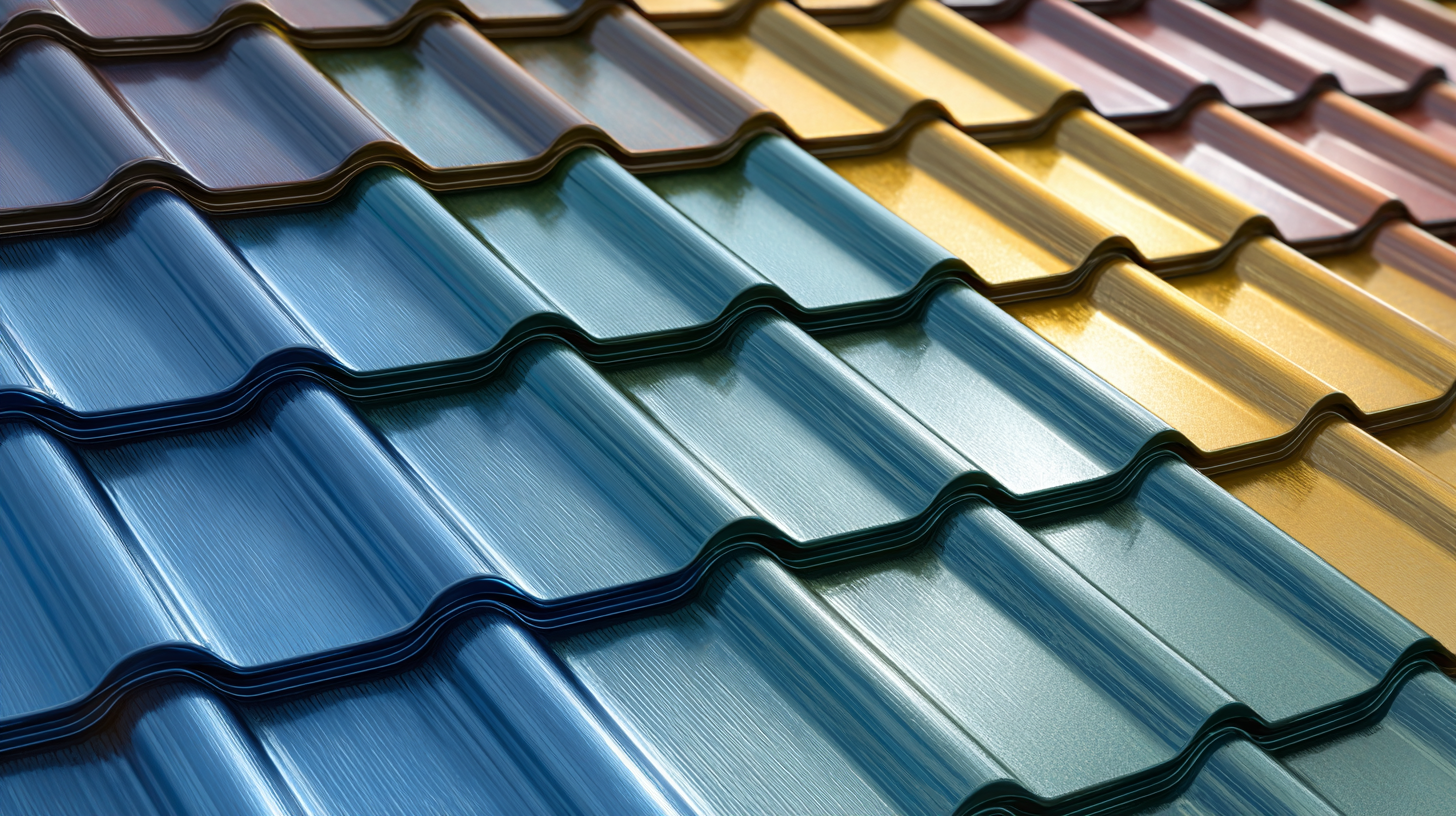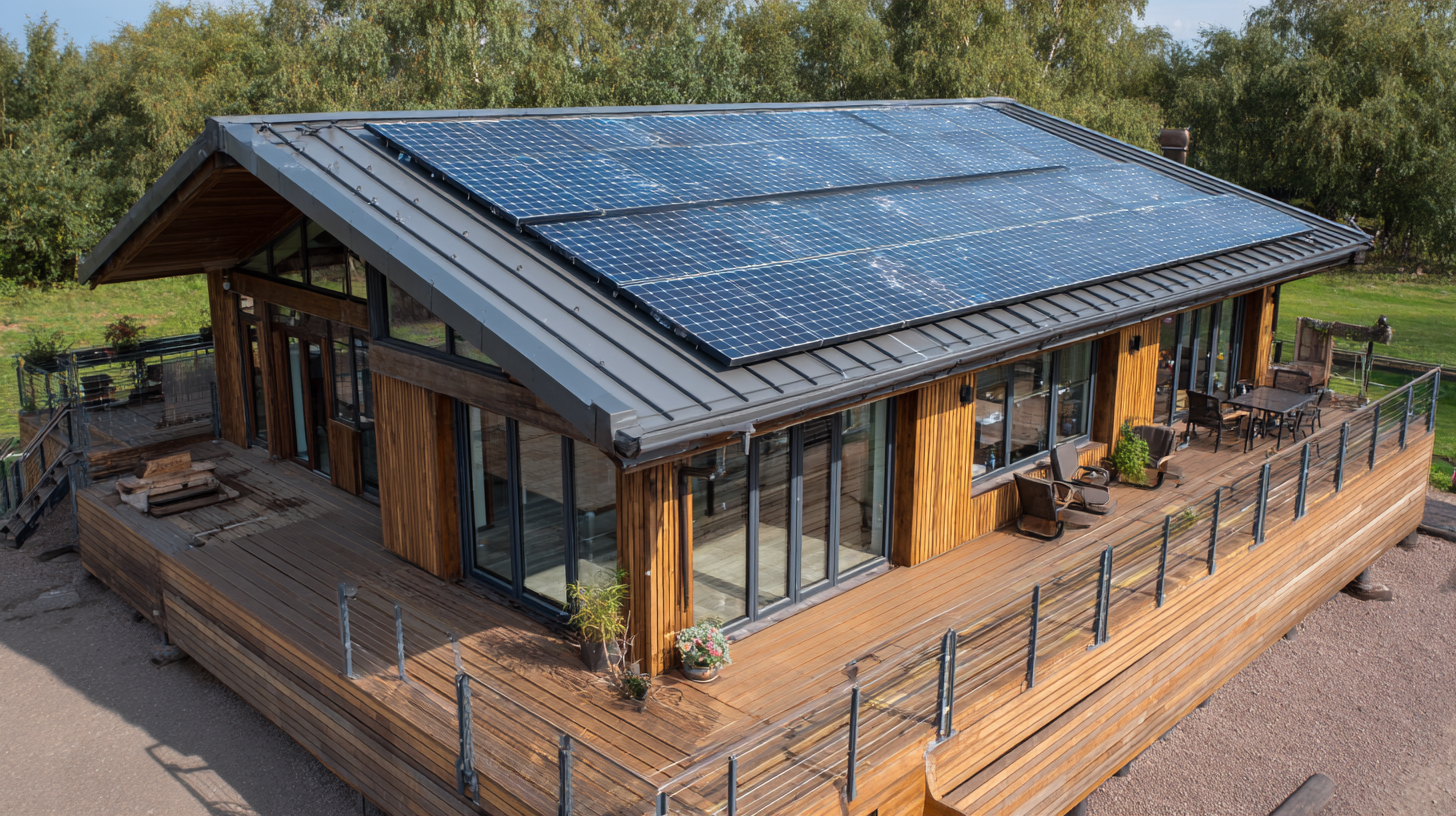
Leave Your Message
-
Phone
-
E-mail
-
Whatsapp

In an era where sustainability and environmental consciousness are paramount, the demand for Eco-Friendly Roofing Sheets has surged among global buyers seeking premium suppliers. As we look towards the industry's technological trends in 2025, it is imperative for consumers to not only prioritize eco-friendly materials but also to identify reliable sources that align with sustainable practices. This blog will explore effective strategies for discovering top-tier suppliers of Eco-Friendly Roofing Sheets, highlighting innovative technologies and market insights that can help buyers make informed decisions. By understanding these dynamics, buyers can contribute to a greener future while securing high-quality roofing solutions that meet their construction needs.

As global awareness of environmental issues escalates, the demand for eco-friendly roofing solutions is on the rise. Recent market analysis from Grand View Research indicates that the global eco-friendly roofing market is projected to reach USD 29.74 billion by 2025, growing at a compound annual growth rate (CAGR) of 3.9% from 2019 to 2025. This trend is driven by homeowners and builders alike seeking sustainable materials that not only minimize environmental impact but also enhance energy efficiency.
Identifying leading suppliers in this niche market requires an understanding of key trends and emerging technologies. Materials such as recycled metal, sustainable wood, and innovative green roofing systems are gaining traction among savvy buyers. According to a report by MarketsandMarkets, the green roofing market alone is expected to grow from USD 1.9 billion in 2020 to USD 3.5 billion by 2025, highlighting the increasing shift toward sustainable construction practices. Buyers must focus on suppliers that demonstrate certifications, sustainable practices, and innovative product offerings to ensure they are investing in truly eco-friendly solutions.
When selecting roofing materials, the integration of sustainable materials has a significant influence on both performance and longevity. According to a report by the Green Building Council, utilizing eco-friendly roofing options can reduce energy consumption by up to 30%. This is achieved through improved insulation properties and the reflective nature of materials like cool roofs, which can lower surface temperatures and decrease heat islands in urban environments.
Moreover, studies indicate that sustainable roofing materials, such as recycled metal and single-ply membranes made from thermoplastics, not only contribute to a reduced carbon footprint but also enhance the lifespan of roofs. The National Roofing Contractors Association (NRCA) highlights that roofs incorporating these materials can last up to 50 years with proper maintenance, compared to conventional options that may need replacement after only 20-30 years. This durability translates into lower lifecycle costs and promotes a circular economy, where materials are repurposed rather than discarded.
As global buyers seek to create sustainable building practices, understanding the long-term benefits of eco-friendly roofing sheets is crucial. By investing in these materials, buyers can ensure a resilient and efficient roofing system that supports environmental goals while simultaneously maximizing their investment.
| Supplier Region | Material Type | Durability (Years) | Sustainability Rating | Average Cost ($/sqft) |
|---|---|---|---|---|
| North America | Recycled Metal | 50 | A+ | 6.00 |
| Europe | Green Roof Systems | 40 | A | 8.50 |
| Asia | Bamboo Sheets | 30 | A | 5.00 |
| Australia | Reclaimed Wood | 35 | B+ | 7.25 |
| South America | Eco-Friendly Tiles | 25 | B | 4.50 |
As sustainability becomes a priority in construction, global buyers of eco-friendly roofing sheets must navigate a complex landscape of standards and certifications. Many suppliers are now aligning their products with international guidelines such as ISO 14001, which focuses on effective environmental management systems. According to a recent market analysis, the demand for eco-friendly roofing materials is projected to grow by 12% annually through 2025, highlighting the importance of sourcing certified products to meet consumer expectations.
Tips: When evaluating suppliers, look for those with certifications from recognized organizations like the Forest Stewardship Council (FSC) or the Cool Roof Rating Council (CRRC). These certifications not only confirm the environmental integrity of the materials but also enhance marketability by demonstrating commitment to sustainability.
Additionally, be aware of regional certifications like LEED (Leadership in Energy and Environmental Design) and BREEAM (Building Research Establishment Environmental Assessment Method). These frameworks assess the full lifecycle of construction products, encouraging buyers to seek materials that significantly reduce carbon footprints.
Tips: Always request documentation from suppliers regarding their certifications and compliance with energy efficiency standards. Transparency in sourcing is key to ensuring your project meets both ecological and regulatory requirements.
Investing in eco-friendly roofing solutions is not just an environmentally responsible choice but also a strategic financial decision. With the global roofing materials market projected to exceed $133.2 billion in 2023 and grow at a compound annual growth rate (CAGR) of approximately 4.6% through the next decade, understanding the cost-benefit dynamics of premium suppliers is essential for global buyers. These eco-friendly materials, particularly solar roofing, are becoming increasingly popular, illustrating a significant shift towards sustainable building practices.

Conducting a thorough cost-benefit analysis allows buyers to see the potential long-term savings associated with high-quality roofing materials. While the initial investment might be higher, the durability and energy efficiency of eco-friendly roofs can lead to reduced maintenance costs and lower energy bills over time. Additionally, as the market expands with an anticipated growth rate of 3.6% from 2025 to 2032, securing quality suppliers can position buyers favorably in a competitive landscape, reaping both financial rewards and environmental benefits. Making informed decisions now can lead to a sustainable future while capitalizing on the growing demand for responsible roofing solutions.
Building long-term partnerships with top Chinese roofing manufacturers requires buyers to implement strategic approaches that align with the latest trends in sustainable building materials. The market is increasingly focusing on innovative production technologies that enhance performance and sustainability. By prioritizing suppliers who are actively investing in eco-friendly practices and materials, global buyers can ensure they are contributing to a greener future while also securing high-quality roofing solutions. For instance, sustainable roofing materials, such as those made from recycled content, are gaining traction, with studies showing these options can reduce energy costs by up to 20%, illustrating the economic benefits of such investments.

Moreover, fostering strong relationships with manufacturers involves understanding the global supply chain dynamics, particularly as disruptions have highlighted the need for resilient sourcing strategies. Establishing communication channels that promote transparency and adaptability can aid in navigating challenges while leveraging technological advancements in production processes. This proactive approach can create a symbiotic relationship, enhancing not only product quality but also innovation. As manufacturers in China focus increasingly on tech-driven efficiencies, engaging with these suppliers can lead to long-term partnerships that yield not only superior products but also align with the wider goals of sustainability and cost reduction in the roofing industry.